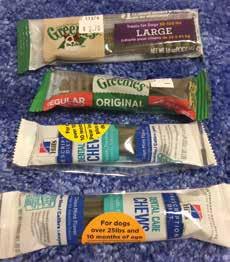
1 minute read
What is the maximum payout amount (i.e. are there lifetime caps)?
What about all those other toys?
As Clawd, Keirin and Bella show us, cats and dogs love a variety of toys. Pretty much any soft toy is appropriate as long as it is not too small. However, medium to large dogs are at risk of choking on tennis balls and they are also destructive to their teeth once they get a bit worn out. The tricky part of toy Spring cleaning is finding the toys that have been too lovingly chewed to still be safe for your cat or dog.
Advertisement
Blue and Tiny’s favorite toys are ready to be discarded. Frayed toys can be a risk from strings, choking or small pieces that can be swallowed and cause a blockage. Also, dogs often like to chew and can swallow the stuffing or squeakers. So spend a little time sorting through the toy box and keep your pets safe. These are some safe, effective VOHC approved chews. However, how do you know if a given chew toy that is not a dental product is safe for their teeth? The general rule is that anything they chew should be soft enough to indent with your fingernail and too large for them to swallow. Obviously, many people give their dogs bones to chew on that don’t fit this rule.




Jigger loves his bully sticks but they are harder than is ideal for his dental health. If you do give your pet these hard chew toys moderation is the key. Don’t allow too much time with them and monitor your pet’s teeth for signs of wear. Your veterinarian may recommend discontinuing them if the teeth become worn or break.

Of course, if all pets were like Bitsie we wouldn’t have to worry about dangerous toys at all.
Carol Gifford, DVM has been practicing veterinary medicine in Vermont since 1987. In 1991, she founded her own practice, which grew to become Riverside Pet Hospital.









